|
CHENGDU (Day 10 - part 1)
The Tibet Hotel is a 5-star, 18-floor hotel prides itself on its blending of a modern style with Tibetan culture.
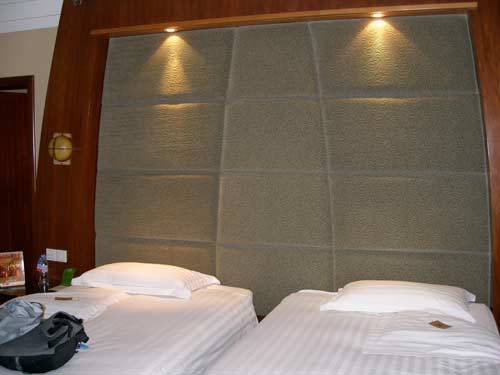
The hotel beds were always nice and firm.
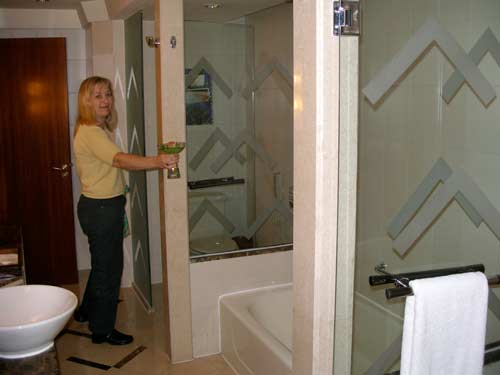
Not a lot of privacy in the bathroom!
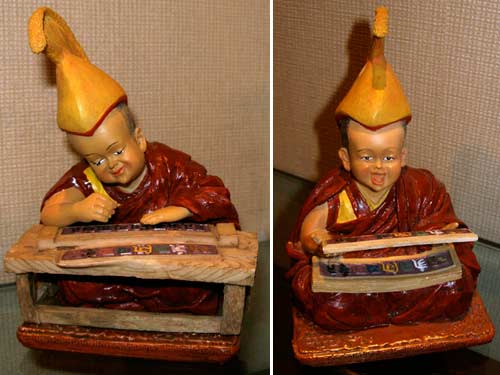
A touch of Tibet
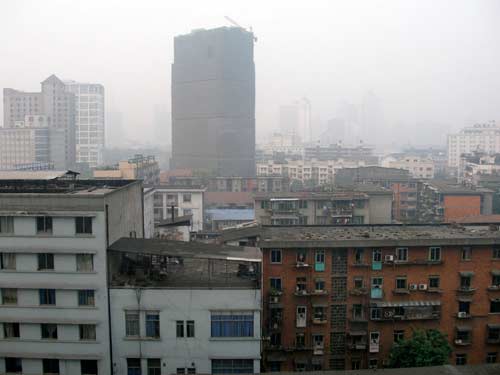
The view

The menu
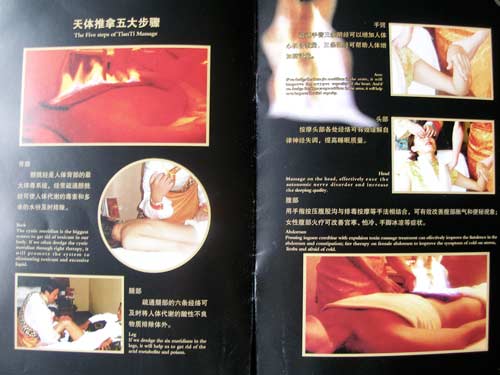
One could also get a 'fire massage'.

Apparently women can't get the full body oil treatment. Hmmmmmm.
We had a free morning, so Kate and I got up early and walked to a nearby monastery. It was only a few blocks from the hotel in a charming little section of town.
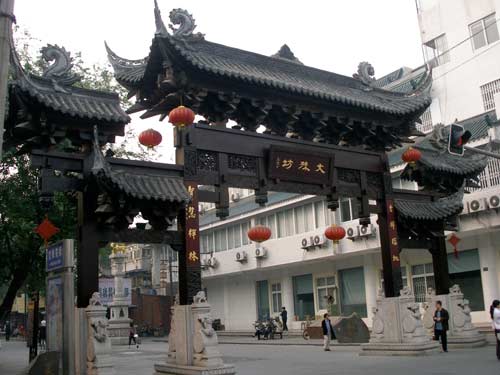
The gate on Wen Shu Yuan Street
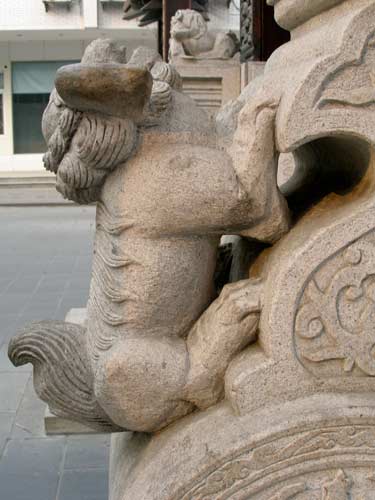
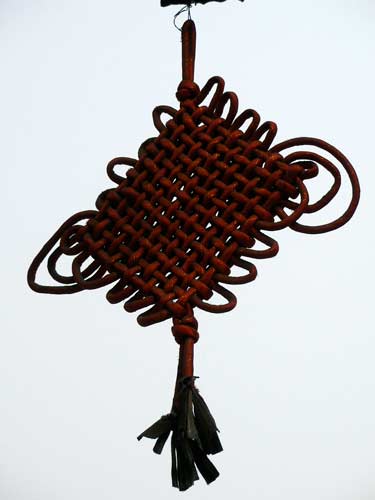
The red diamond is a symbol of good luck.
 A sign gives us the rules for the Civilized Tour Block, "in order to improve the moral standards of both tourists and our citizens." Some examples are: Don't spit. Don't chase or beat animal. Don't paint or carve on the historical relics. Do not be out for small advantages. Don't force tourists to take photos. Do not occupy public facilites for a long time. Wear clean and proper clothes (do not wear clothes exposing the neck or shoulders in public places). Do not utter dirty words. Resist superstition. Avoid pornography, gambling and drug.
The Wenshu Monastery is the best-preserved Buddhist temple in Chengdu. Initially built during the Daye Period of the Sui Dynasty (605 - 617 BC), it was called Xinxiang Temple. In 1681, Cizhou, an accomplished Buddhist monk, came to the monastery. He built a simple hut between two trees and lived an ascetic life there for several years. Legend has it when Cizhou was being cremated, the image of Wenshu (Bodhisattva Manjusri) appeared in the flames. So people regarded the monk as the reincarnation of the bodhisattva. Thereafter, it became known as Wenshu Monastery.
The monastery was destroyed in the flames of war at the end of the Ming Dynasty but was rebuilt in 1697. There are six major halls and 200 statues of Buddhas and bodhisattvas spread out over the 2 million square feet of area.

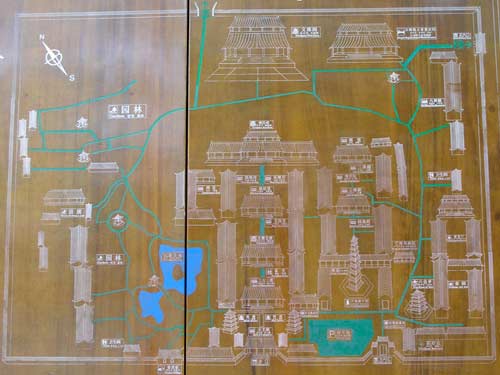
A map of the area
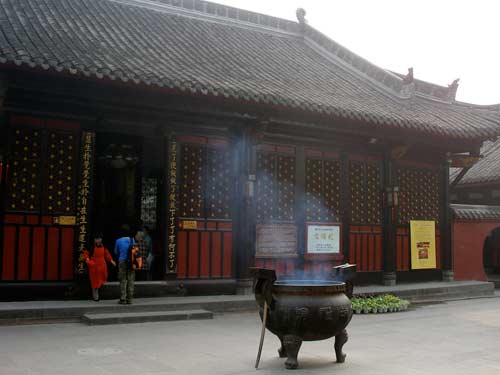
Morning incense fills the air.
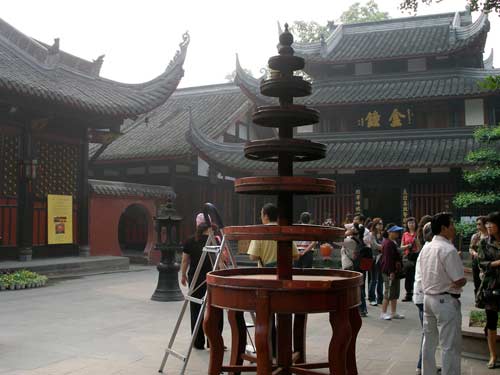

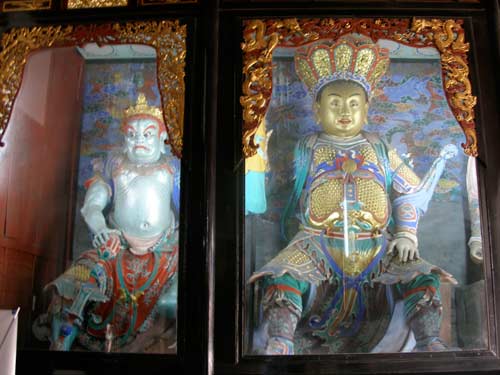
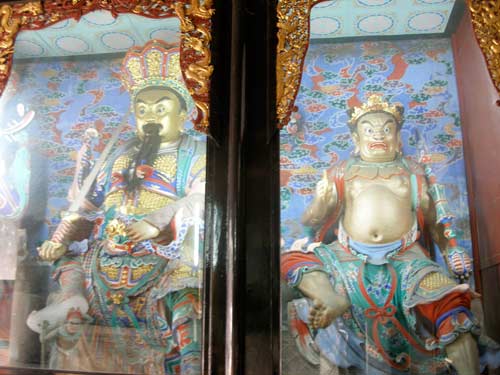
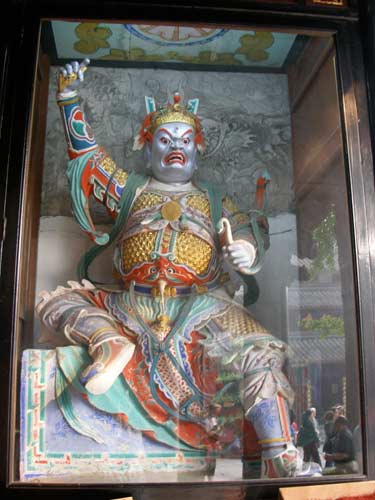
A wide range...
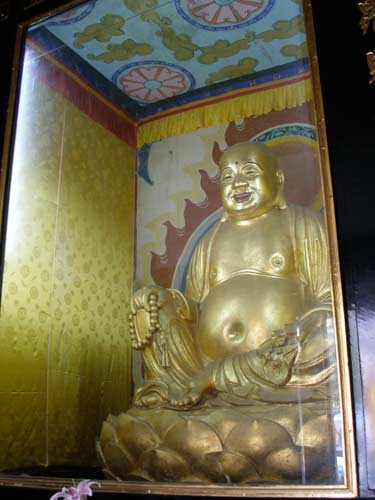
... of emotions!
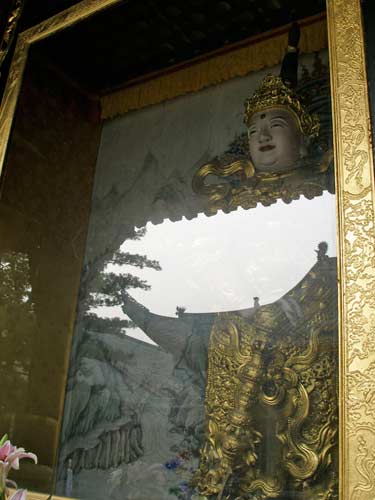
This copper statue of Veda Bodhisattva was molded in 1829. Veda is the guardian who protects the dharma and purifies the evil spirits.
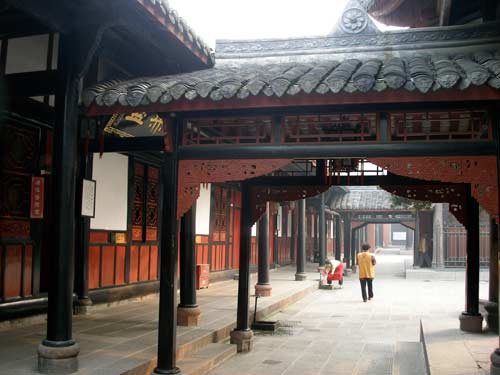
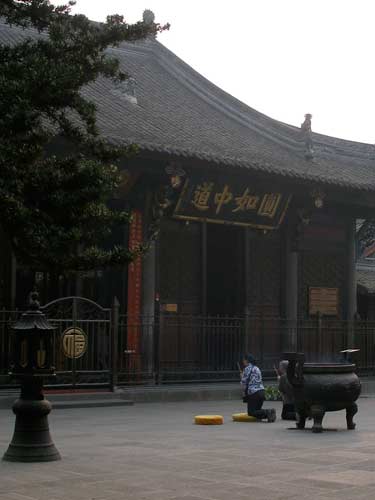
Many people came here to pray, and several of the halls were filled with people chanting.
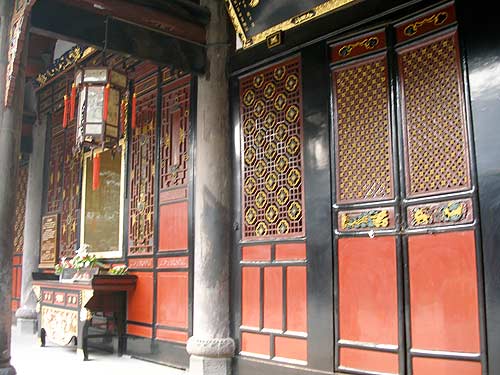
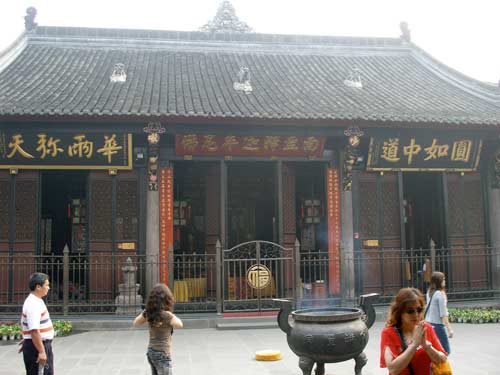
Sakyamuni Hall was originally built in 1697.
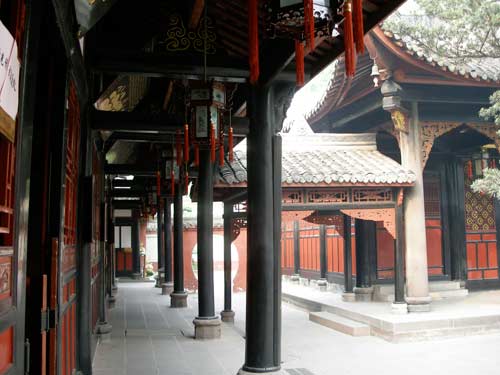
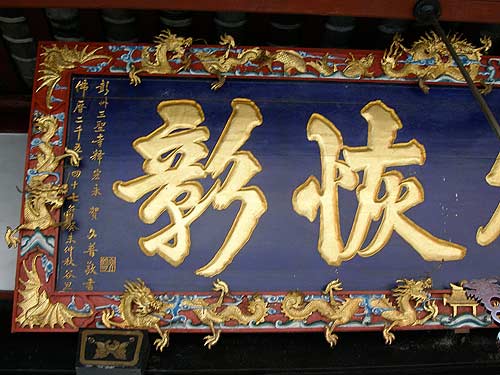
Gold dragons wrap their way around this sign.
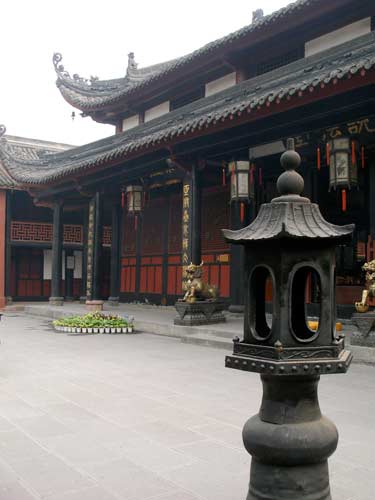
The Dharma Preaching Hall (or Hall of Medicine Buddha) was originally built in 1697 and then rebuilt in 1807.
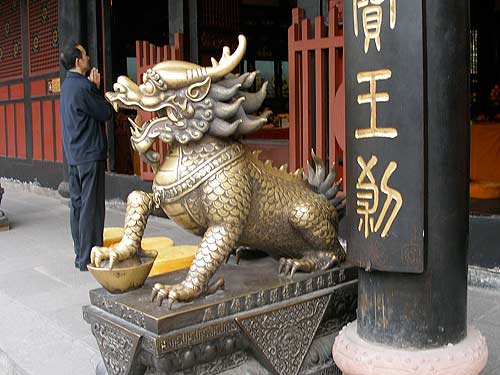

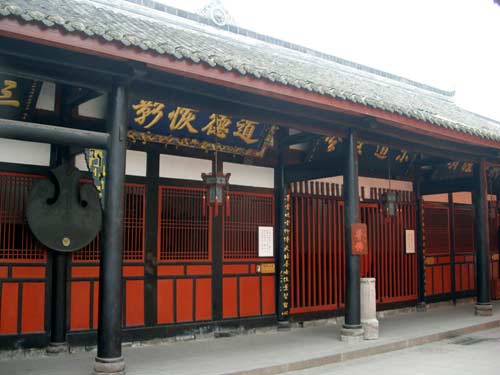
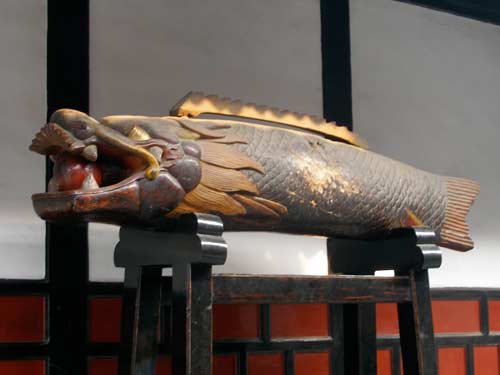
The ball in the dragon's mouth is known as 'The Pearl of the Dragon'. Traditionally it was believed that the dragon held (or at least chased) the sun.... hence it being a red ball, and perhaps connected with the idea of dragons breathing fire. Over the years, however, the ball became more of a silver (pearl) color, and hence became known as a 'flaming pearl'.
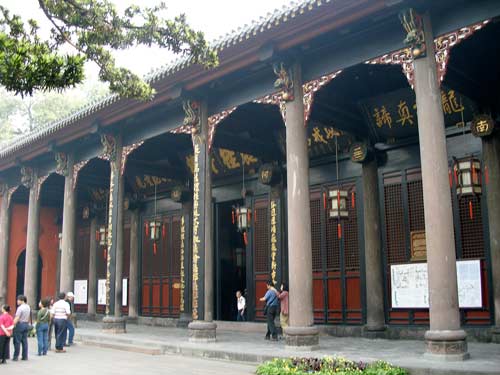
We headed back and rejoined the group in time to catch the tour bus to the Panda Research Base.
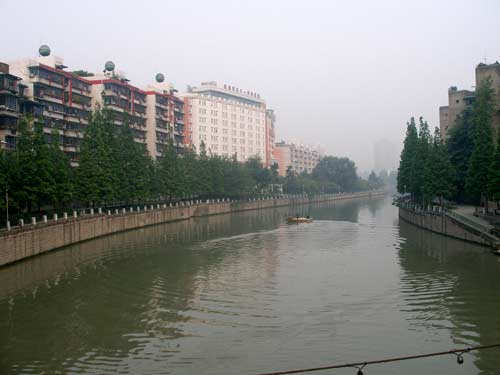
Walking back over the Jinjiang River
In ancient times, the Jinjiang River (also known as the Funan River) was Chengdu's city moat. In 1997, the municipal government completed the harnessing of the river. It is acclaimed as a 'green necklace around the neck of Chengdu'. During the Eastern Han Dynasty (35 - 330 AD), the city was often referred to as Jincheng, or Brocade Town. A brocade is a rich fabric, usually silk, woven with a raised pattern, typically with gold or silver thread. When it was washed in the river, the brocade turned brighter and fresher, hence giving the river its name of Jin Jiang, or Brocade River.
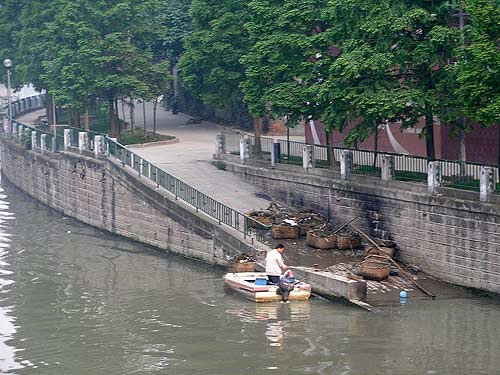
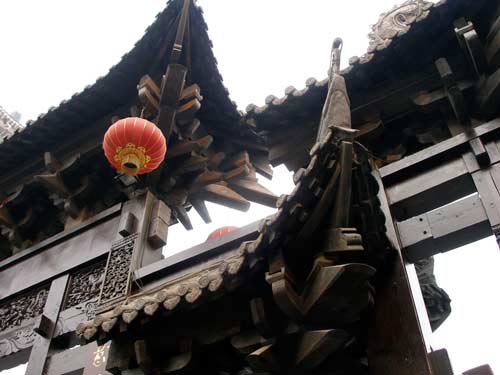
We had to drive through the bustling city to get there. Chengdu is the capital of Sichuan Province. It has been the economic and cultural center of this region since 400 BC. In the early 4th century BC, the king of Shu moved his capital here, renaming the new city Cheng Du, which means "become a capital."

Chengdu
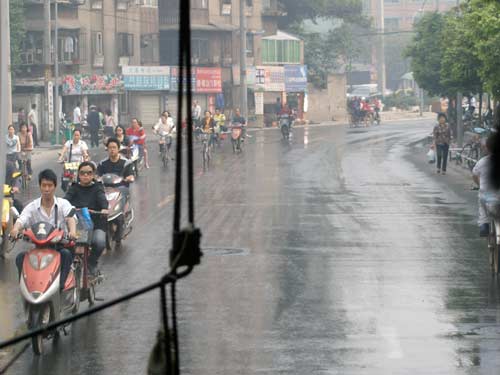
With 10 million people living in the city, and a total of 80 million in the province, this is one busy city. Fortunately it is flat, so many people still use bicycles and mopeds as a form of transportation.
|

